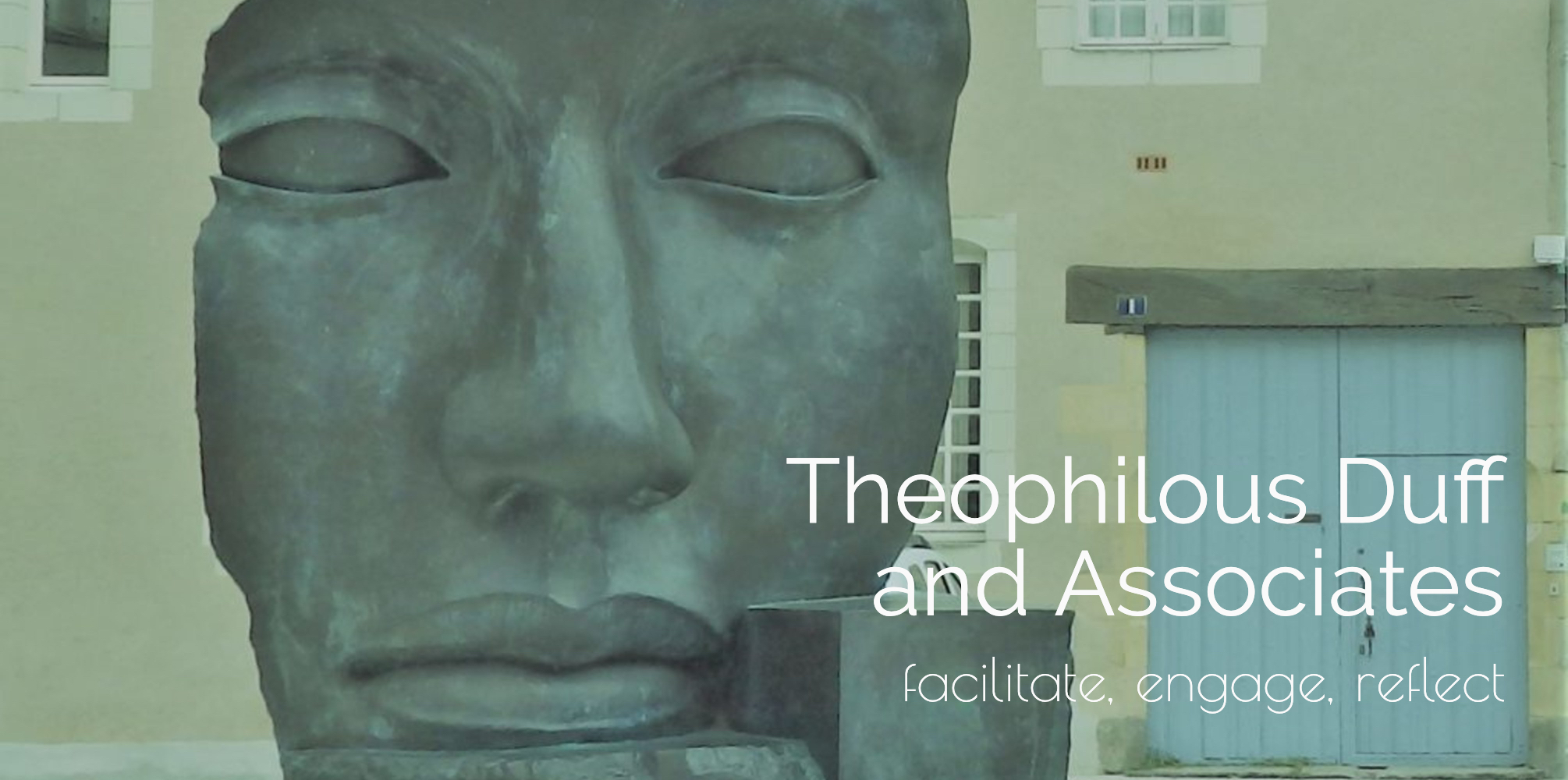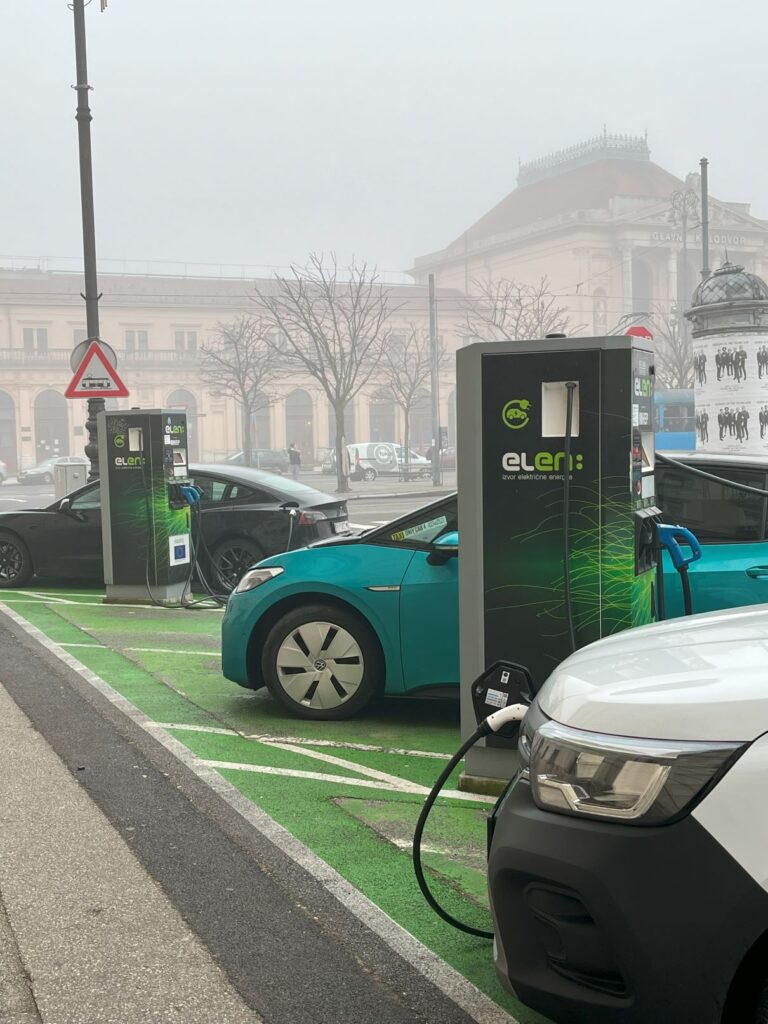

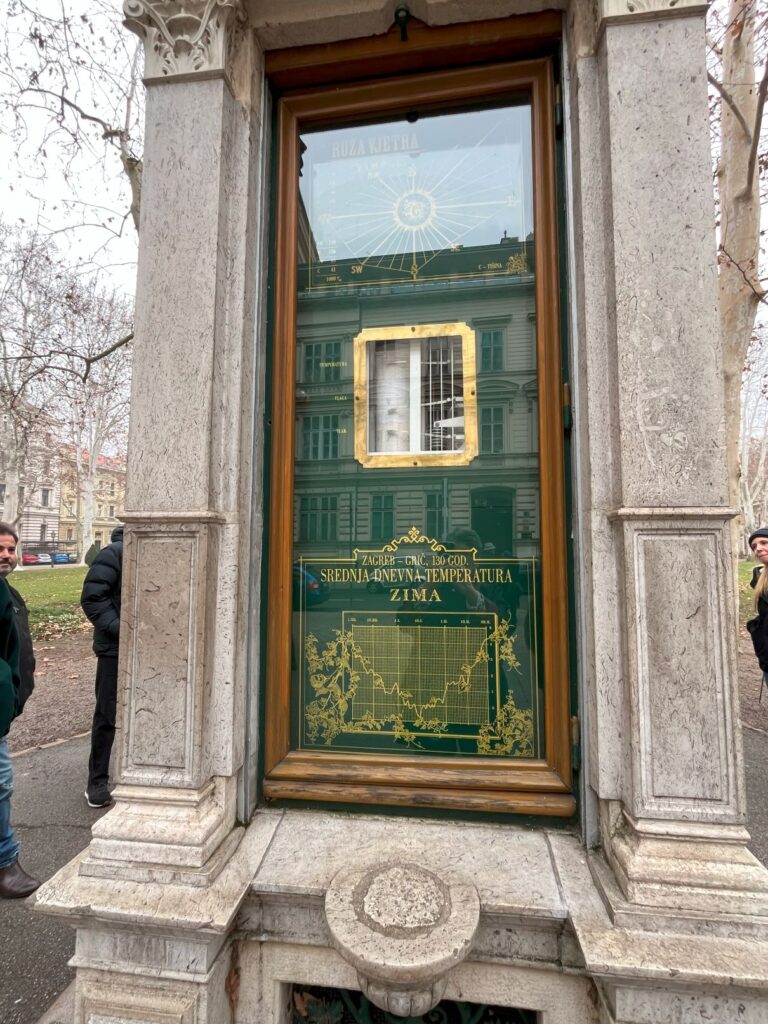
We’ve often discussed our desire to avoid all cold climates wherever possible and have extended that thinking to our annual down under Godzone pilgrimages. Therefore, Europe in February/March was way outside our climate comfort zone and as it transpired on this trip the previous reasoning was fairly sound. Wherever we went in the Balkans, snow was sighted on distant peaks and then within two days of arriving in Brittany for the next stage of our trip (coming soon!) we had snow and woke to frost on the ground. Four or five layers of clothing, boots, beanies and scarves prevented hypothermia, but it has not persuaded us to repeal the winter travel ban. Weather apart, we thought we would try a well-priced, 15 day Trip-a-Deal package for this trip and it was worth it.
On our usual Intrepid trips, groups are small and no more than12 people, so finding out on the first day that there would be 40 people was a bit of a surprise for many of us! Bussing through seven countries with 38 other antipodeans, a Croatian guide and driver and crossing 8 border posts all within two weeks proved a pretty hectic schedule. Luckily our fellow travellers were similar to us in age, past travel experience and had a thirst for Balkans knowledge. We got on pretty well, shared stories and meals and didn’t miss the departure times once! It helps to have a guide with lots to share, empathy and an ability to read her clients and Kristyna was such an expert. Our driver, Marihan, was also amazing, exhibiting great skill in driving round very windy roads and much patience in traversing numerous customs checks on our behalf.
In every city we visited a local guide showed us the sights on walking tours and gave us their personal insights into recent Balkans history particularly the 1990s conflict, sometimes contradicting each other but never failing to offer honest opinions. Before the trip we expected to learn more on the Ottoman role in the region and the influence of the Hapsburg empire, however the recent Balkans war often pushed these into the background.
We started in Zagreb, the capital of Croatia and now a member of the EU and a city we had briefly visited some nine years previously. Walking the streets in misty morning light, it has a very European feel with many late 19th and early 20th century buildings, wide boulevards, green tree filled squares, electric trams and lots of churches. A major earthquake in 1880 meant a new city emerged which rapidly grew before WW2. It was here where we first heard Tito, the Yugoslavian Republic’s communist leader, spoken of in glowing terms and this was repeated in every one of the old Yugoslav countries we visited. It seems he managed to walk a fine line between the east of the Soviets and the West of the US and Europe and kept the Republic happy and safe. There are even some who hanker after the socialist safety net despite 34 years of capitalism. Bullet holes are still evident in many building facades and some museums were closed due to the off season and being under renovation too.
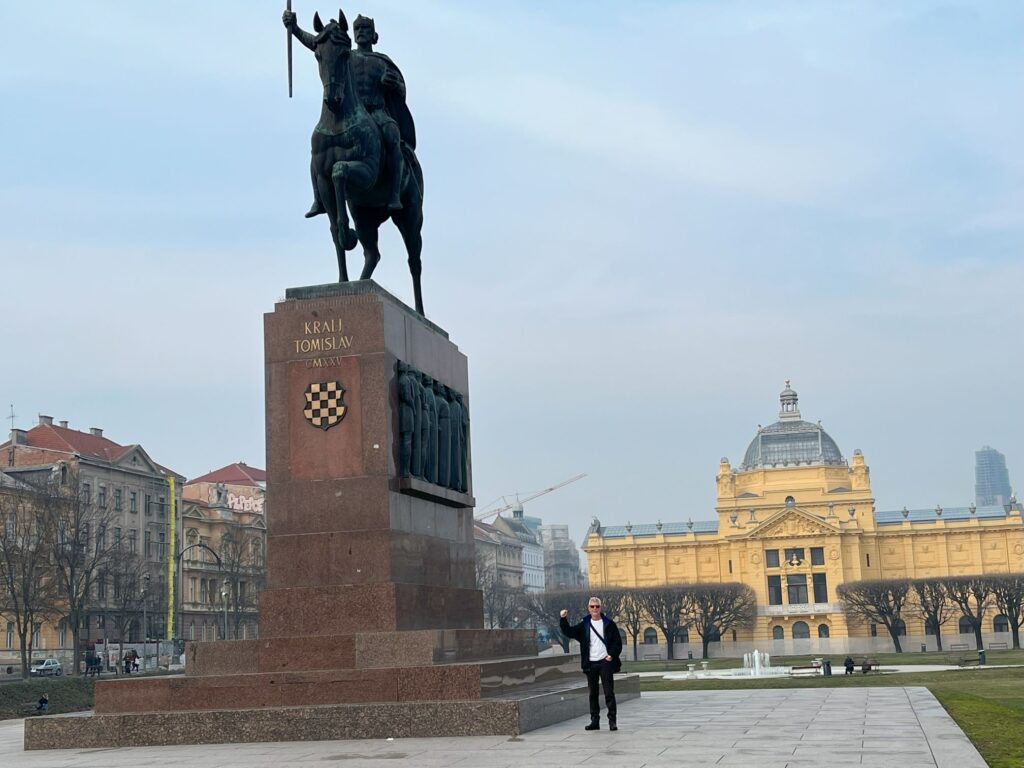

Rain set in as we crossed into Slovenia, the most prosperous of the old Yugoslav republics close to both Austria and Italy, with a very small population and over 60% of its land in forests and mountains. Slovenians also avoided much of the conflict in the 1990s when the Serbs decided to attempt a takeover of the collapsing republic at the end of communism.
Lake Bled was ringed by mist obscuring the surrounding mountains and our views however we did visit the church-topped Bled Island with hardly any other tourists in sight (and many steps to climb too!). In summer, there is an exhilarating zipline course down a ski run beside the lake (what the website calls adrenaline toboganning!
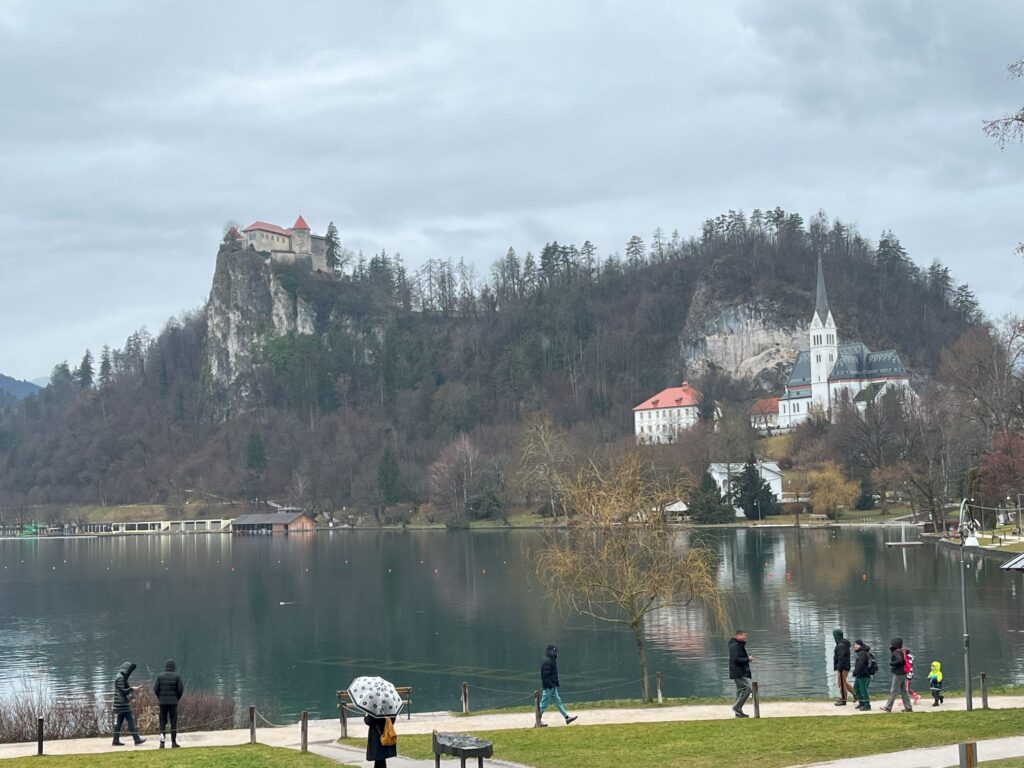
The nearby Ribno Alpine Resort (www.hotel-ribno.sl) hotel building was wooden and warm and set in mountain biking country replete with Pogacar’s cycling jersey on the wall in reception and a range of small cabins with hot tubs for visitors/cyclists to stay in. We had a tasty dinner buffet for €30 each and they also had the best breakfast we’d ever seen, everything you could hope to consume – Tony managed four courses.

Next stop was Ljubljana, capital of Slovenia and a pretty city surrounded by parkland. We had an informative guided wander of the streets and a boat trip. Situated along an ancient trade route between the northern Adriatic Sea and the Danube, the old town was mainly pedestrian and had cafes and restaurants to choose from for a good lunch. The various bridges had histories, of course, including the Dragon Bridge, built in early 20th century when Ljubljana was part of the Austro-Hungarian Empire.
Another more recent innovation was the small electric vehicles, Gentle Helpers, which were available to pick up pedestrians for free and take you to your destination in the city – all just a phone call away.
Our hotel Ibis was well located with a great view from our room and across the road from a supermarket. Some of us took the opportunity to dine on pre-prepared delicacies in our rooms making a change from eating out and also a little less costly.
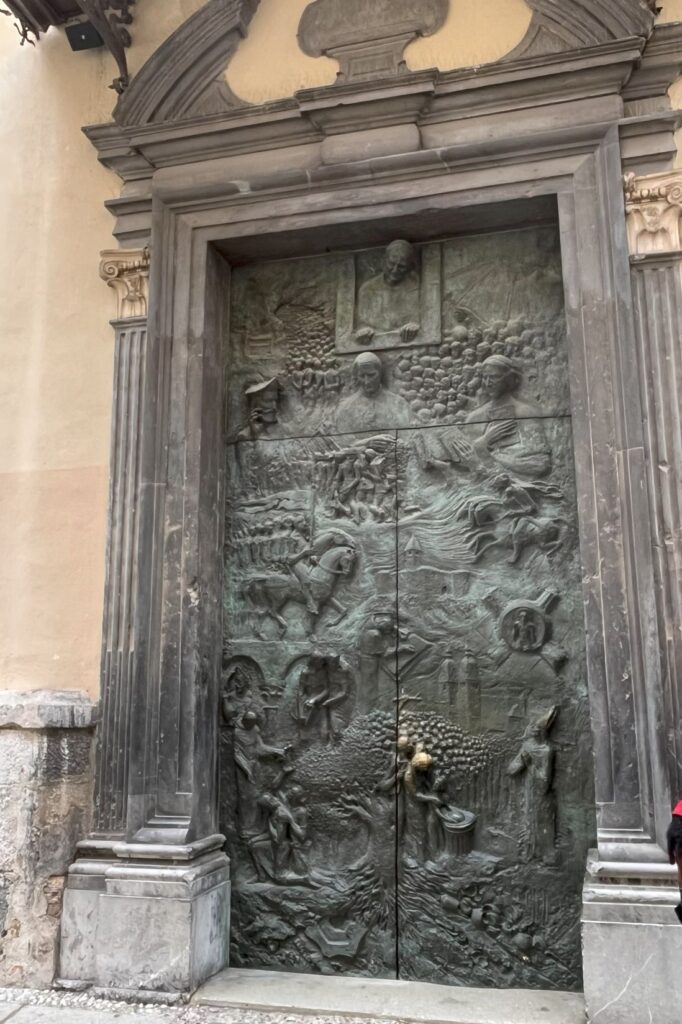


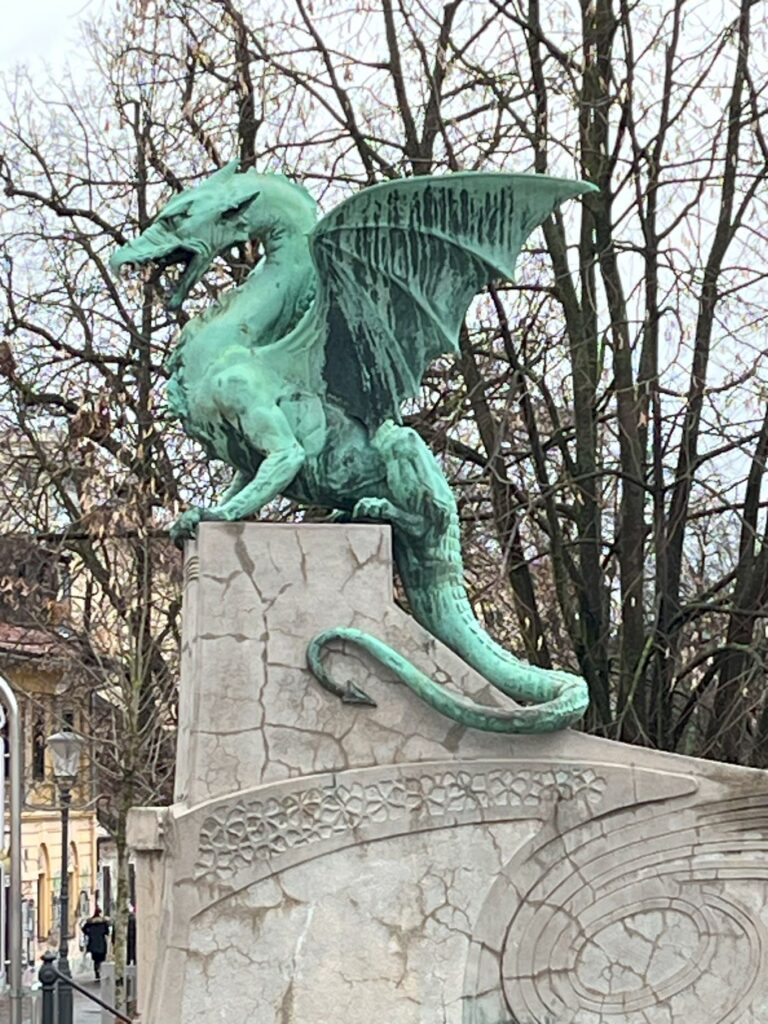
One of the tour’s real highlights in Southern Slovenia was Postojna Cave, a 24-kilometre-long cast cave system with a railway that was built in the 1880s. The train takes you through the cave to a three-kilometre-long concrete walkway, lit everywhere by lamps which was full of weird and wonderful rock shapes, stalactite and stalagmite formations and, yes, home to baby Dragons Check out the link for great photos
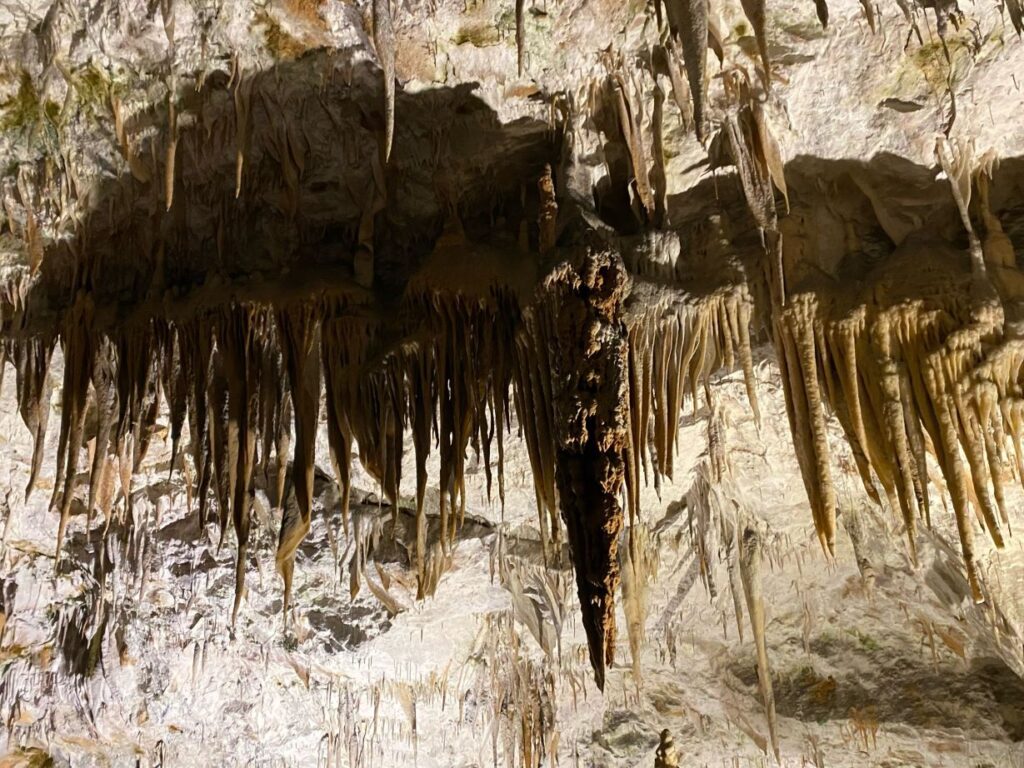
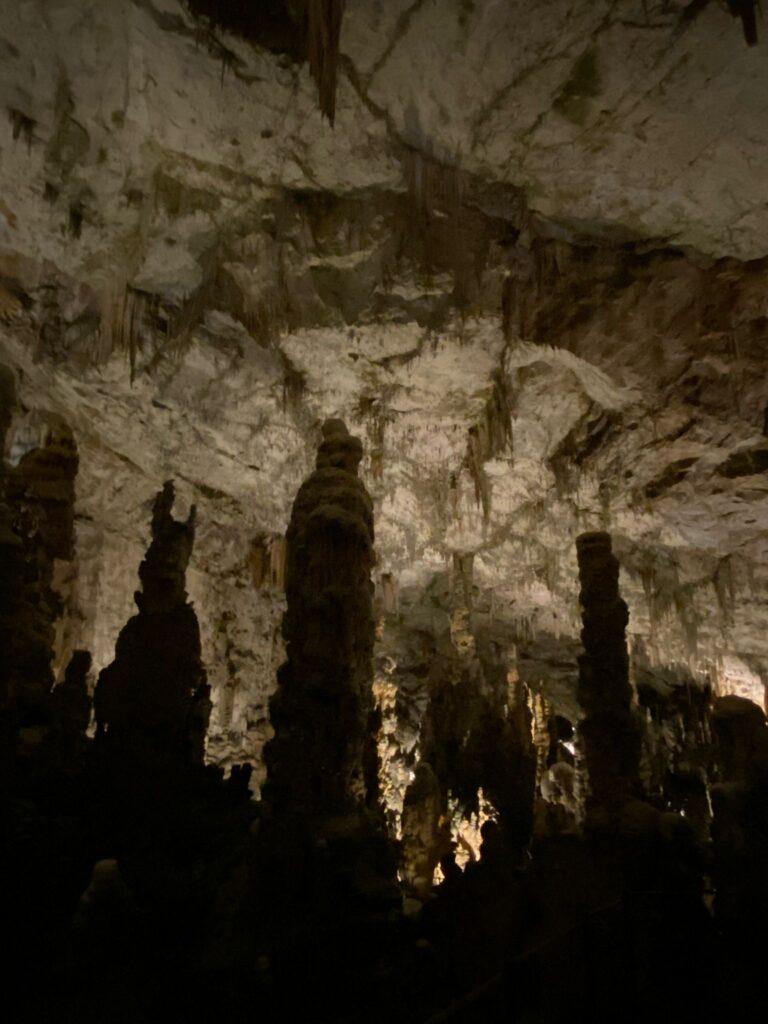
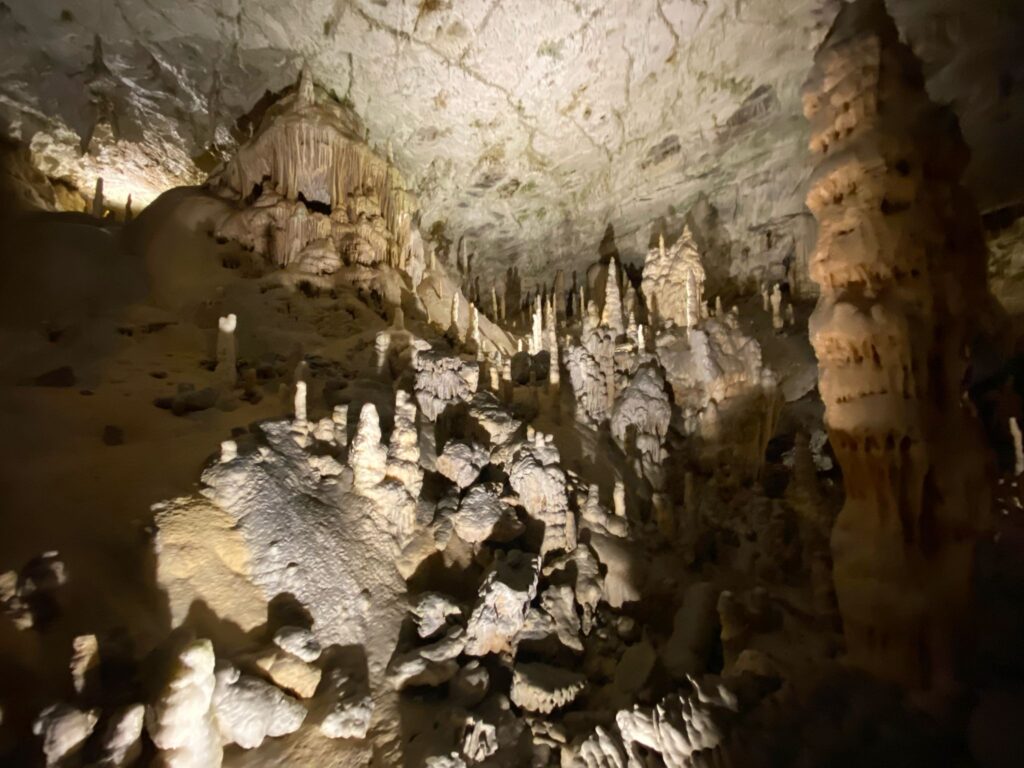


After our underground experience, Krystina suggested spending an hour on the Adriatic coast at Opatija, a Croatian resort, full of Hapsburg villas, seaside cafes and warm sunshine!
Warmed by the beach, we headed to our hotel close to the Bosnian border. There we had a treat, meeting Sonja Leka, local tour-guide and head of the TARA Association in Ličko Petrovo Selo. She also works with her local community enterprise promoting woollen willy warmers and other crafts! We had had a long day of travels and were not really looking forward to ‘a talk by a local woman about their social enterprise’ BUT she had us in stitches, in the palm of her hand with such great humour and a free glass of local rakia to warm us up!
The Plitvice Lakes are a UNESCO World Heritage site. With unique geology, there are a series of interconnecting lakes and waterfalls enclosed by forest with barriers called tufas formed across the water courses constantly changing the level and direction of water. Some of the group walked around the lower lakes for three hours in constant driving rain which did deter Sally and a few fellow-travellers but gave the walkers amazing views of lakes and waterfalls.
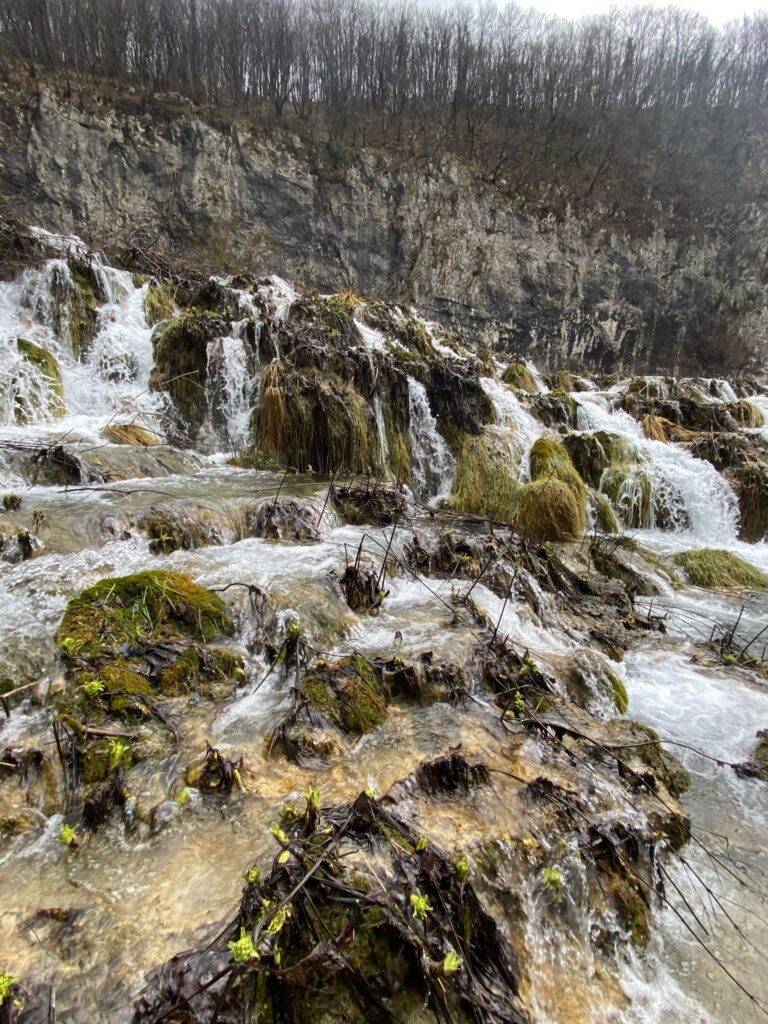

After lunch, we drove to a small village called Rastoke. Built to harness the powerful river with watermills in the 17th century, it has rapids and waterfalls surrounding the village which can be easily seen from the road above. It is quite a sight and seems almost make-believe until you wander through the town. So many watermills and waterfalls with water coming from all directions!

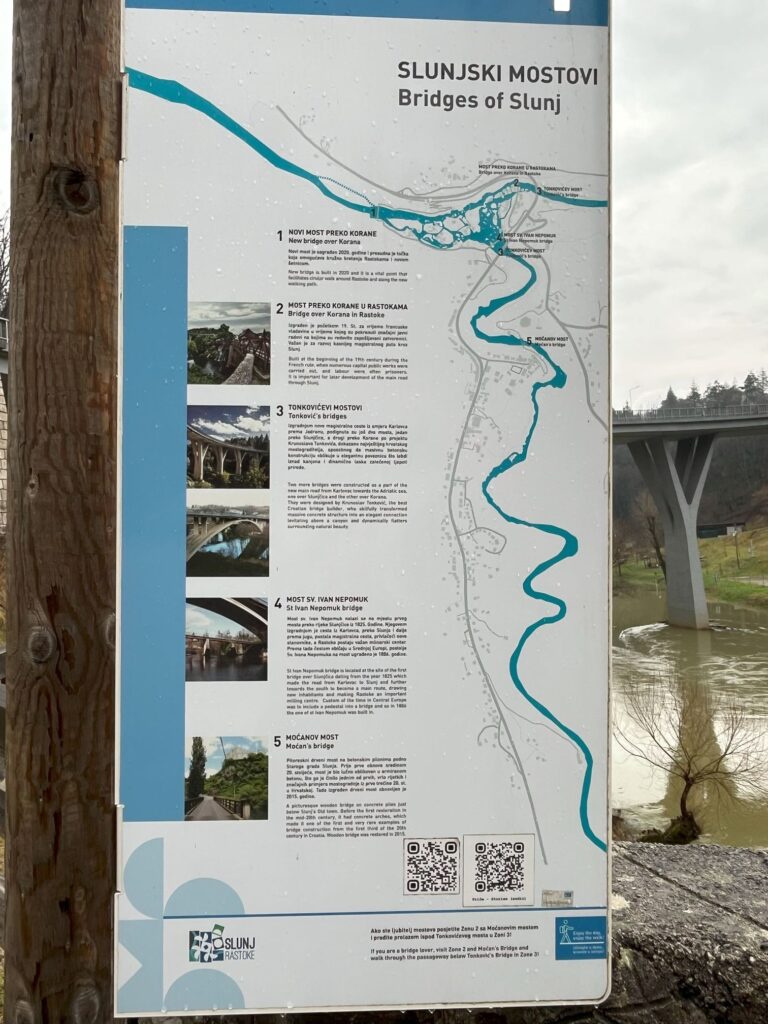
Kristyna’s next tour addition near our hotel was a visit to Željava air base under Gola Pljescvica Mountain on the Croatian/Bosnian border. Built by Tito to evade both Soviet and US radar to house Mig 21 fighter planes, it was now disused and what an eerie place it was. We wandered into huge underground hangars and tunnels and drove on the runways, all the while being aware of unexploded land mines planted everywhere during the Balkans War. Our trusty guide, Sonja Leka, who lived nearby was infectiously cheery, telling us stories of visiting the air base as a teenager and listening to 60s and 70’s rock on clandestine radios – which helped her learn English, she said!
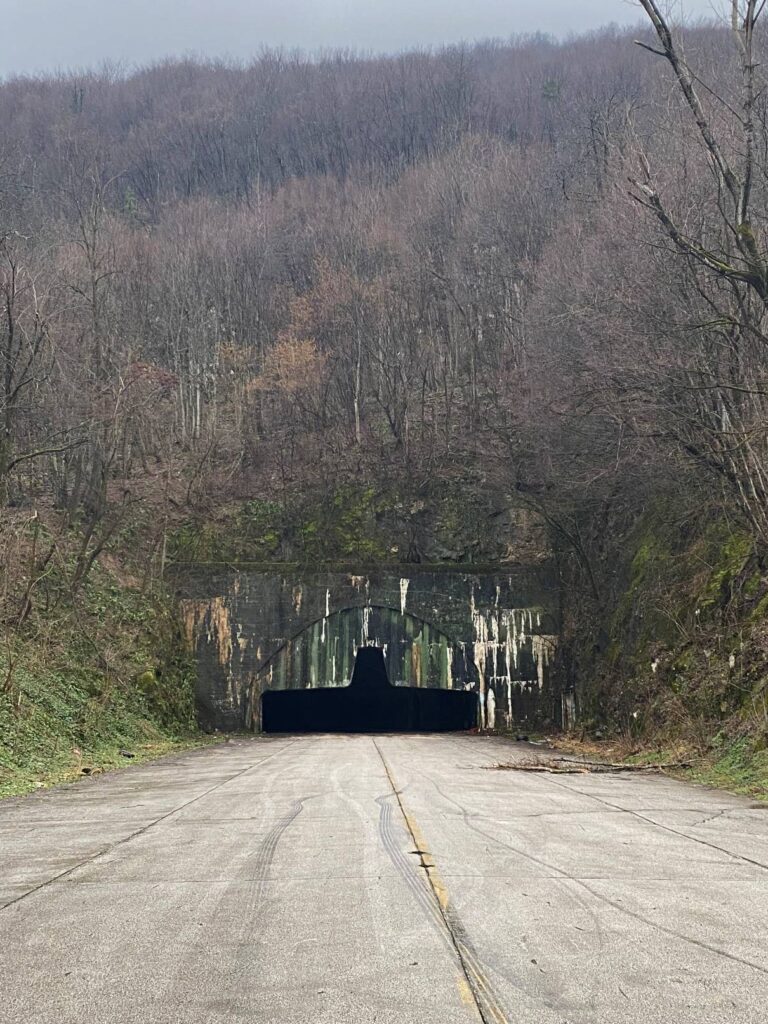
The first long road journey took place next day as we drove across Bosnia to Sarajevo for our next night’s stay. The countryside was varied with plenty of mountains and farmland to gaze at and as we had stocked up with food we didn’t have to stop very often. We arrived in Sarajevo – a city Tony has longed to visit – in mid-afternoon, and we then had a 2-hour walking tour straight away. We would have liked to spend much more time in this city in order to enjoy its history as the melting pot of the region and the site of the assassination that provoked WW1 and caused reverberations for another two or three decades. We walked past huge Hapsburg public buildings, mosques, a synagogue and orthodox and Catholic churches – all close to each other – jewellery markets, lots of choices for dinner and of course a large river like all big cities.
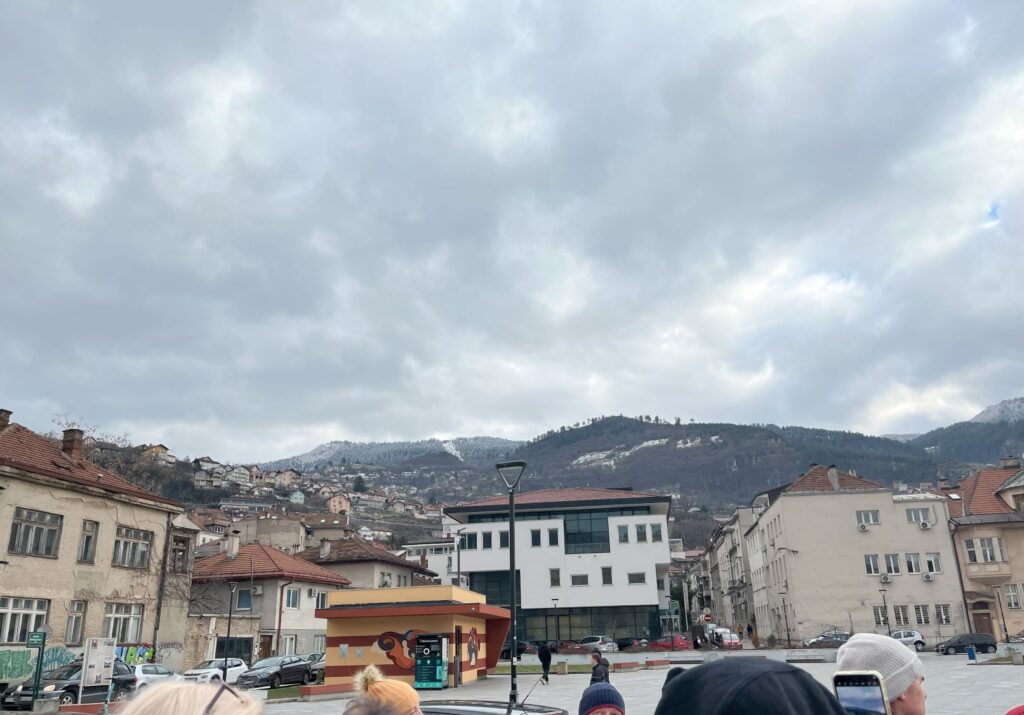
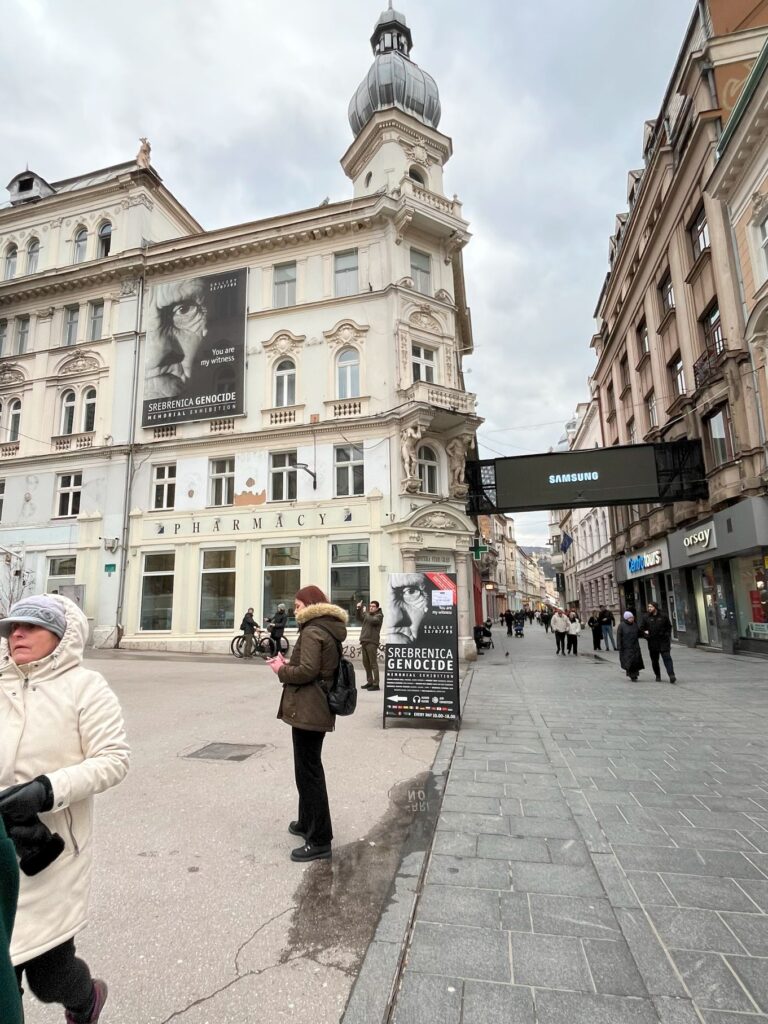
Next day we headed south back towards Croatia for our third entry, stopping in Mostar, Bosnia for a few hours of wandering the streets and lunching. Another lovely city with a troubled past changing ruler between Ottoman, Hapsburg, Serbian, Nazi Germany, Yugoslavia all inside 100 years. The famous Stari Most bridge was blown up and the city was besieged twice during the Bosnian War during 1992-94. The bridge has since been rebuilt and the old part of the city reborn with tourism with many of the shops selling only locally made artifacts. It was a little surreal to be a tourist walking over the bridge that we had previously seen on TV as the centre of fighting just 30 years before.

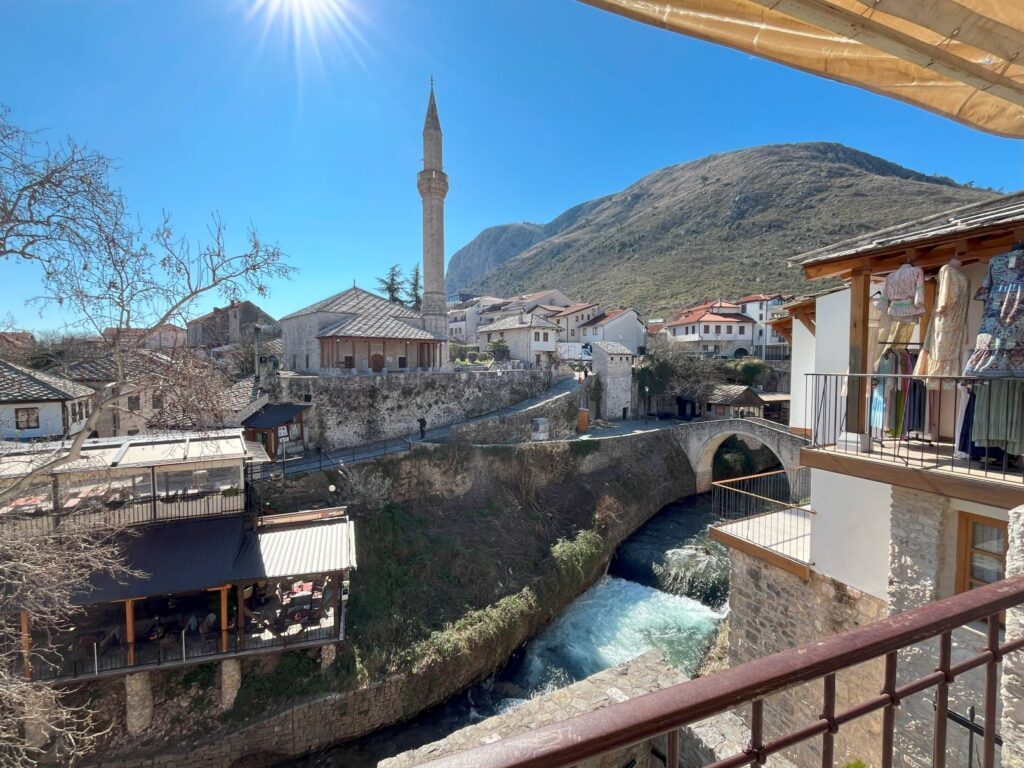
Dubrovnik was our next major destination, where we stayed two nights at the Hotel Lero in the Montevjarna hotel district, which had sea views and was a short bus ride away from the old city, good for returning to the hotel with tired feet!
We’ve visited Dubrovnik before in the height of the summer tourist season when cruise boats and tourist buses banked up outside the city walls and it was difficult to wander anywhere quietly. This time, after our obligatory walking tour (with a commentary on headsets by a very good guide with only minimal references to the Game of Thrones!) we wandered around for most of the day with few others to distract us. The 14th century gothic renaissance Rectors Palace Museum provided some history and a sense of why Dubrovnik developed as it did.
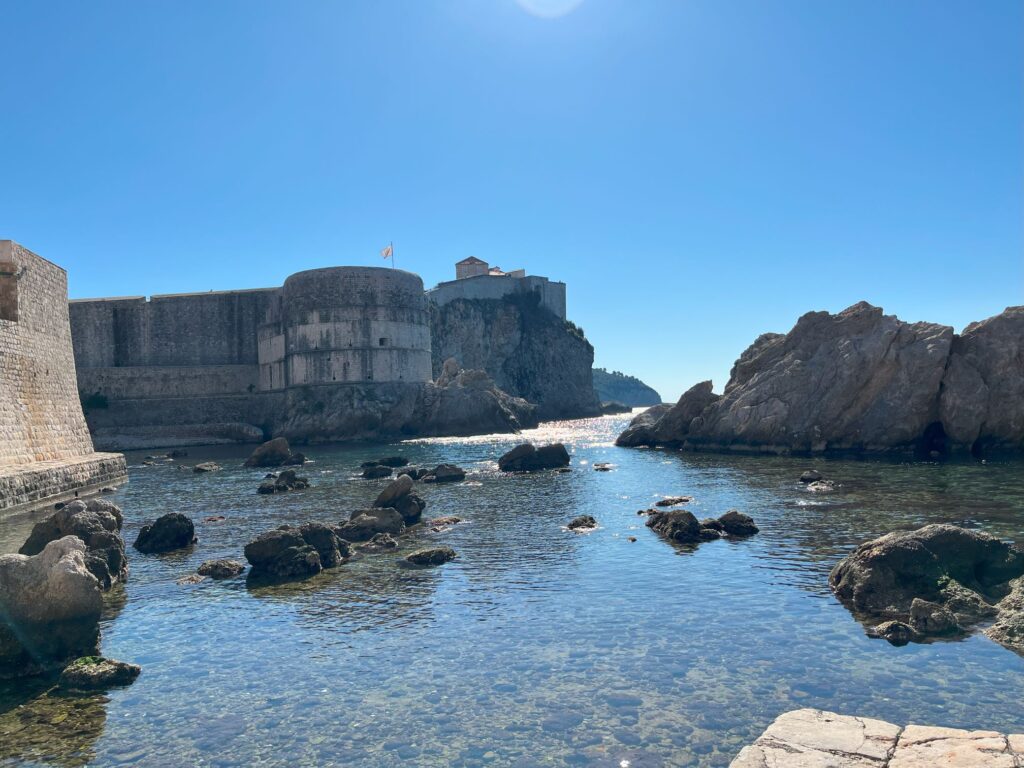
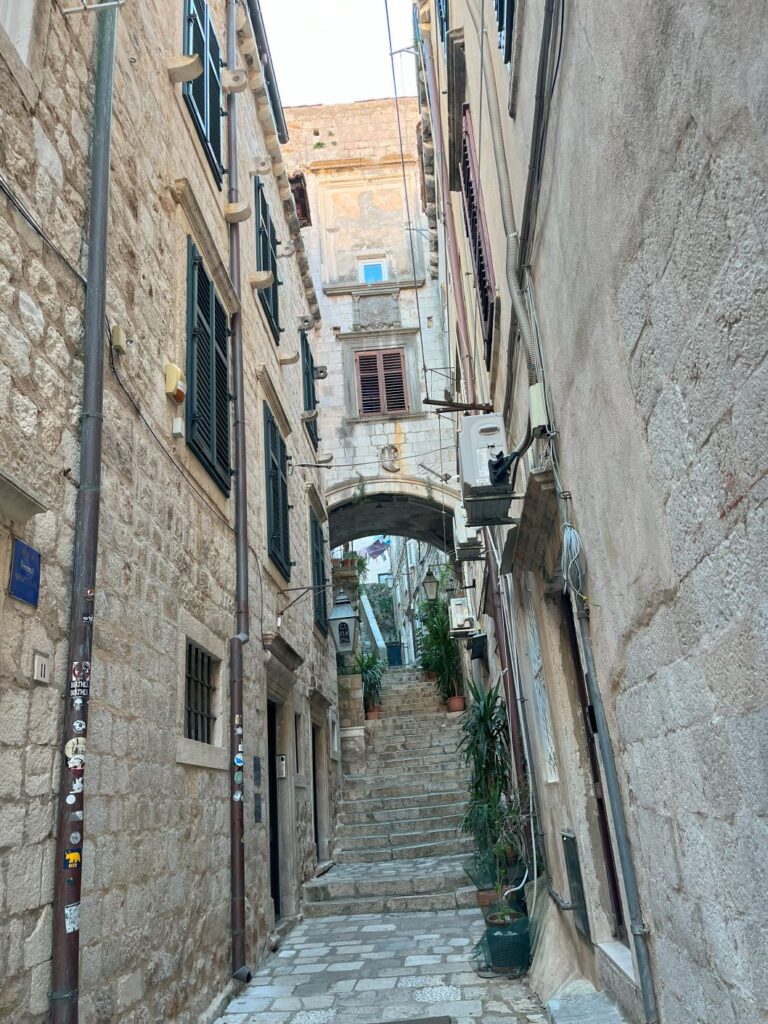



We video-called our daughter while sitting by the harbour and weren’t once interrupted by a group of people following a raised umbrella and we enjoyed a scrumptious and relaxed lunch of seafood risotto, sitting in the sun near the harbour.
The sun came out here and stayed with us for most of the rest of the trip meaning less changes of clothes when getting on and off the bus.
Now, as a tourist, the Balkans are welcoming and full of more ancient history. However, every now and again you notice the bullet holes that still remain in buildings and edifices and wonder how, just a short time ago, this region was yet again the centre of fighting for power and control.
Next day, we departed Croatia for the last time and headed into Montenegro, one of the smallest countries in Europe with a population of only 630,000 with native Montenegrins in the minority now that many Ukrainians and Russians have recently settled here. Breaking away from Serbia in 2006, it is now trying to become an EU member.
Stunning mountain scenery greeted us in the Bay of Kotor, only 90 kilometres from Dubrovnik and we continued to marvel at the amazing scenic beauty until we drove out the next day. Early spring is too early for cruise boats or many of the other tourists, so our tour of the old town of Kotor was leisurely and relaxing after another excellent lunch of fresh octopus salad.
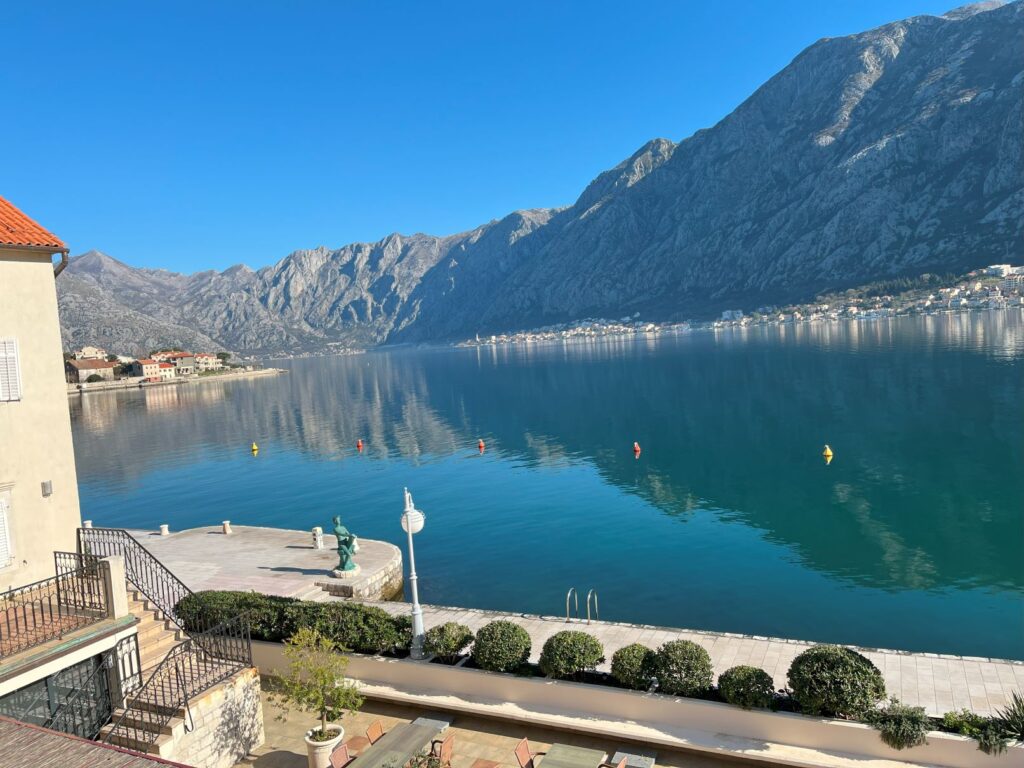
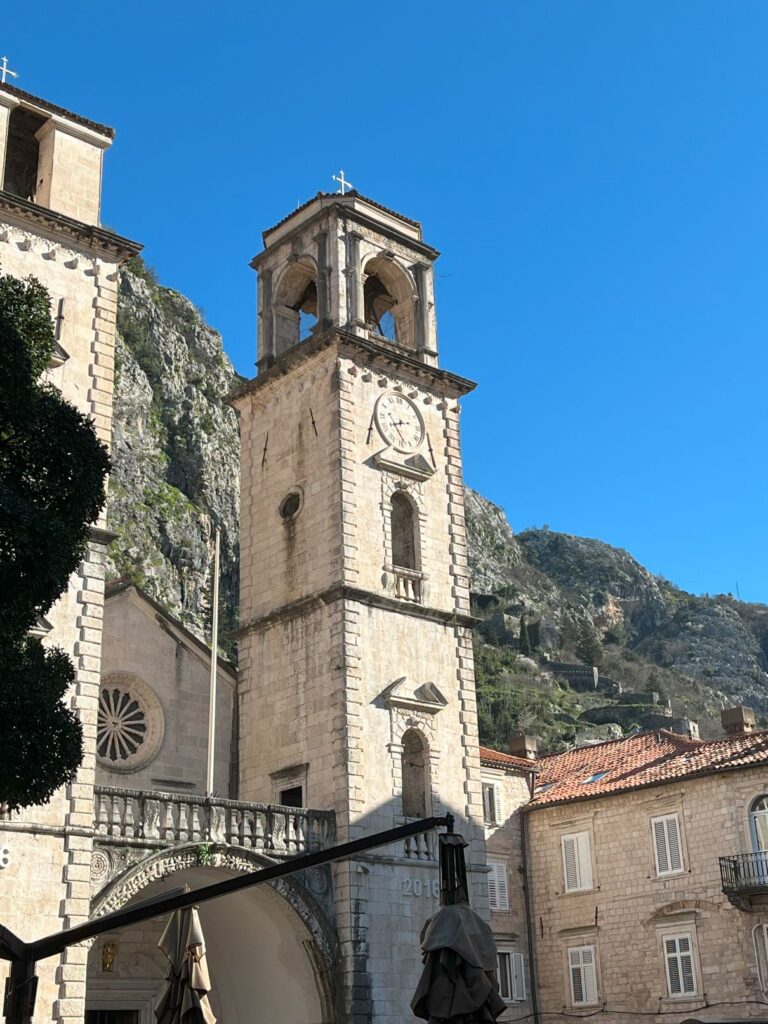
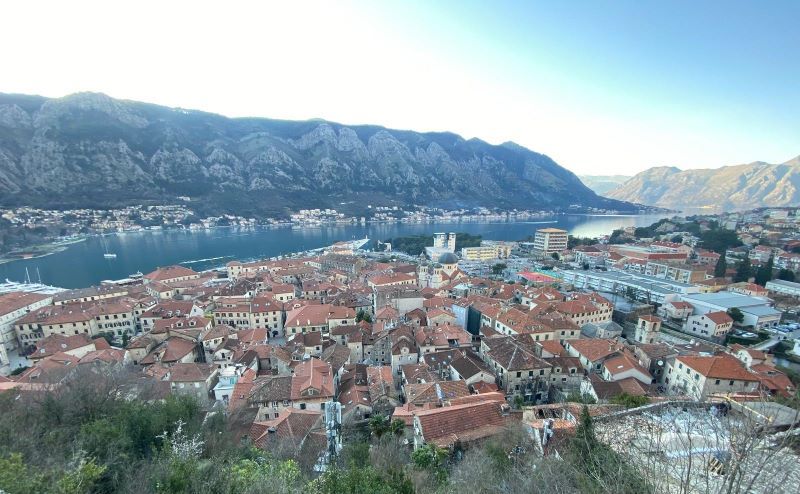
We enjoyed some excellent food on this trip in hotels and restaurants. Much of this coastal area was governed by Venice for 400 years and they built Fort St John on the hill above the city walls where Tony climbed up some 1350 steps on a lovely sunny afternoon. Sally and others meanwhile toured the Bay by speedboat, visiting the lakeside settlement of Perast, sampling pomegranate wine and the island chapel of the Church of our Lady of the Rocks, then finally arriving in style by boat at the Hotel Splendido.
We only had one day/night in Montenegro and we were then transported quickly to Albania and Shkodér Lake, a vast karst lake bordering the two countries with an area of 400 square kilometres. The township was a bit dismal, and our guided walk didn’t make it any brighter not really giving us a great first impression of Albania. Life under the communist regime was very hard and dangerous for many who wished to see system change. Our hotel, Tradita in Shkodér however, was a comfortable and welcoming traditional timber inn built around a grassy seated area where horses probably used to graze on their travels along the trade routes. We grazed in their amazing restaurant for lunch and dinner where all the meat and vegetables were grilled over a massive open fire. Delicious!
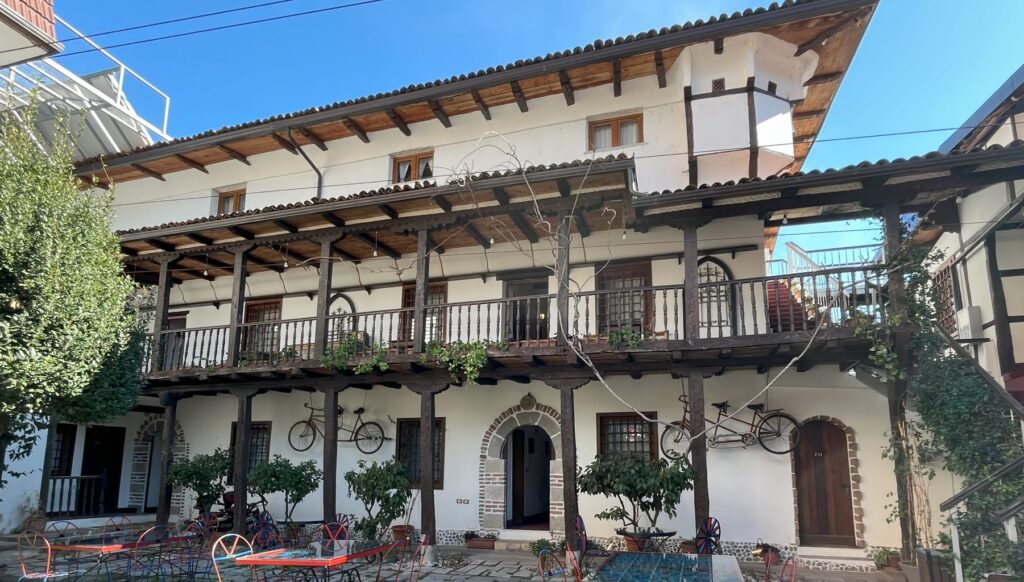
The following day was an early 6am start with takeaway brekkie provided by the hotel as we were traversing Albania as well as doing 2 walking tours and then going to another country, North Macedonia, all in 14 hours! Certainly not the itinerary we would have planned and thankfully, the next day we had a rest day.
The two walking tours were very interesting and full of insights into Albanian history and how it has changed over time. Tirana the country’s capital surprised us, having been catapulted into the 21st century from the 19th in less than 30 years. Bustling, bright, scenic, cosmopolitan and a place we’d love to revisit someday. Pity we only had three hours and definitely worth spending more time in to explore properly. The country was cut off from the rest of the world for over 40 years under a communist regime and has had to emerge a capitalist democratic western aligned nation almost overnight. It has its issues but is faring better than some others.
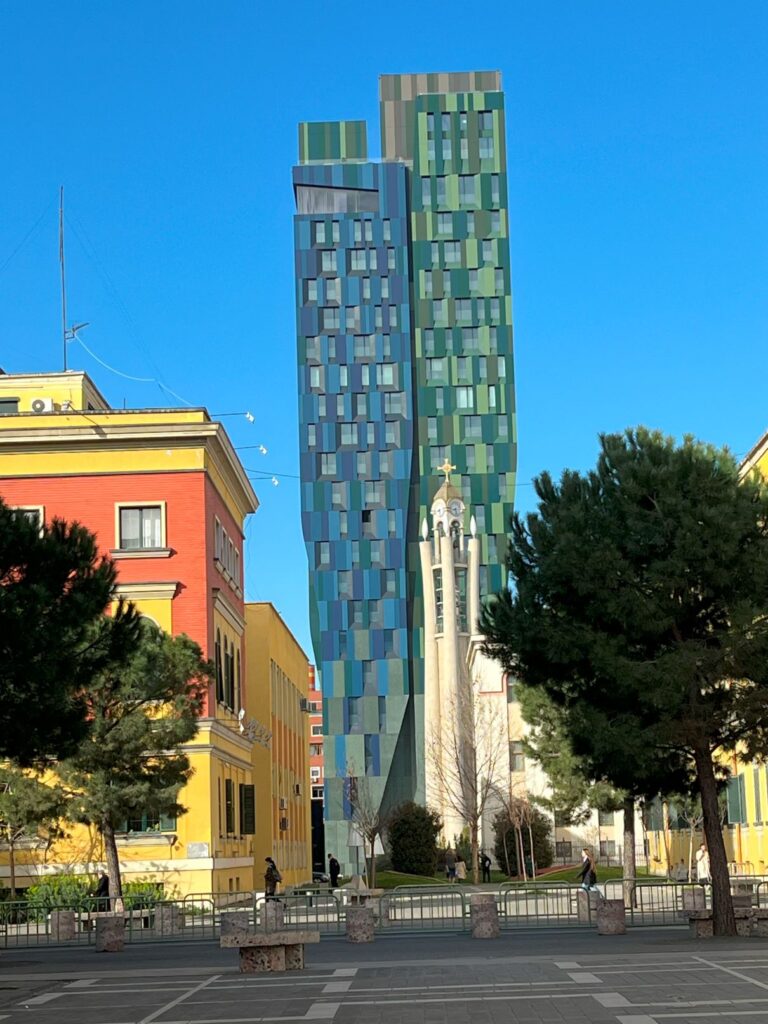
We headed east to Lake Ohrid, another body of water straddling two countries, a unique ecosystem and a UNESCO World Heritage site. With very clear and filtered water the lake is known as oligotrophic.
Ohrid, the city, was once known as the “Jerusalem of the Balkans” having 365 churches, one for each day of the year. A Greek town in the era of Phillip II of Macedon in the 4th century BC, it was a major Roman trading centre connecting with Byzantium, now Istanbul. Recently like a lot of the region it has been ruled by the Ottomans, then the Serbs, then the Bulgarians, got some independence before WW2, then Bulgarians again and finally was incorporated into Yugoslavia. Now it is in North Macedonia (as opposed to Macedonia in Greece) which is a landlocked country of nearly 2 million people encircled by 5 different countries. The tour of the town included a steep climb, a rebuilt Roman amphitheatre, a wonderful view of the Church of Saint John at Kaneo and a boat ride around the bay which summed up the visit, short and worth revisiting.
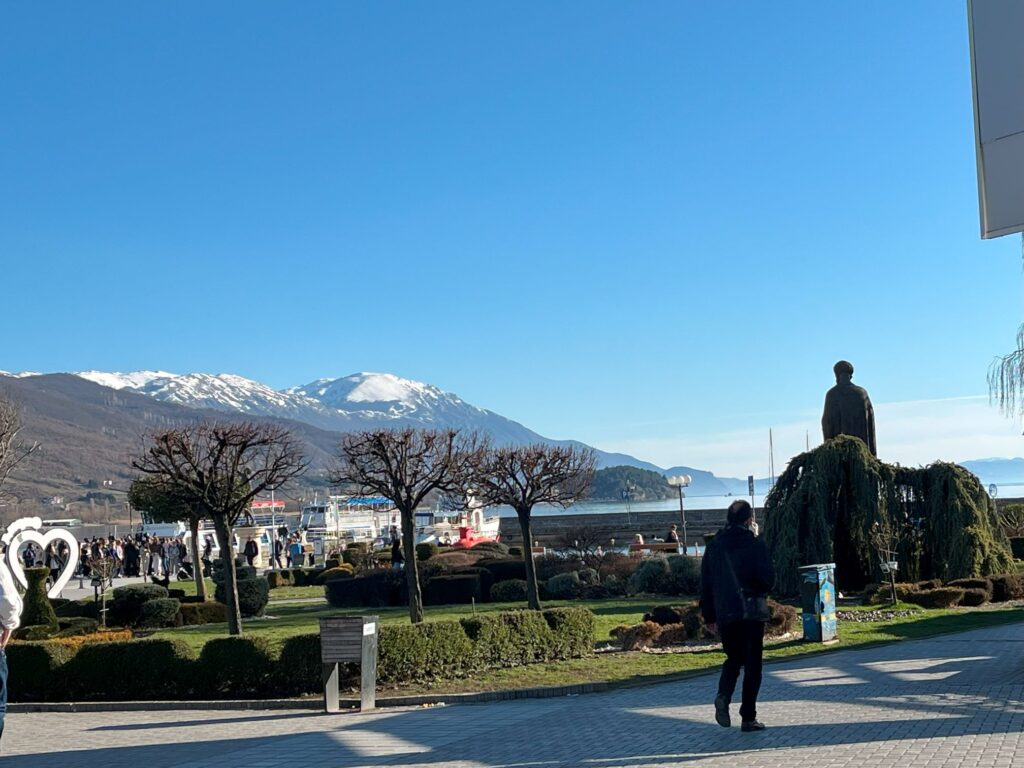
Our long day continued in the bus as we journeyed another 2 1/2 hours to our resting place, Skopje, the N. Macedonian capital. We had two nights here with a free day to explore or just rest a little.
A marker of a good hotel for our group was whether or not your room had a kettle, cups and English Breakfast teabags! Most did, thankfully. Our hotel in Skopje excelled themselves with a coffee machine as well as a kettle in our room too! Quite a few of our fellow travellers were returning to Australasia via Frankfurt when they learned that a major strike would paralyse air traffic in Germany for their flights home, so they spent most of the free day trying to organise alternative travel arrangements. We were flying Sofia to Amsterdam so missed this stressful reorganising.
We just wandered the city, easily enough as it’s got a river and wide boulevards and was easy to navigate if a bit disappointing. Rubbish and graffiti on buildings and riverbanks was disappointing; but what really took our fancy was the vast number of large statues and the faux neo-classical architecture. The statues, all commissioned as Skopje 2014, celebrate Macedonian history and have proved very controversial as the funds could have vastly improved city infrastructure. Check out this video!
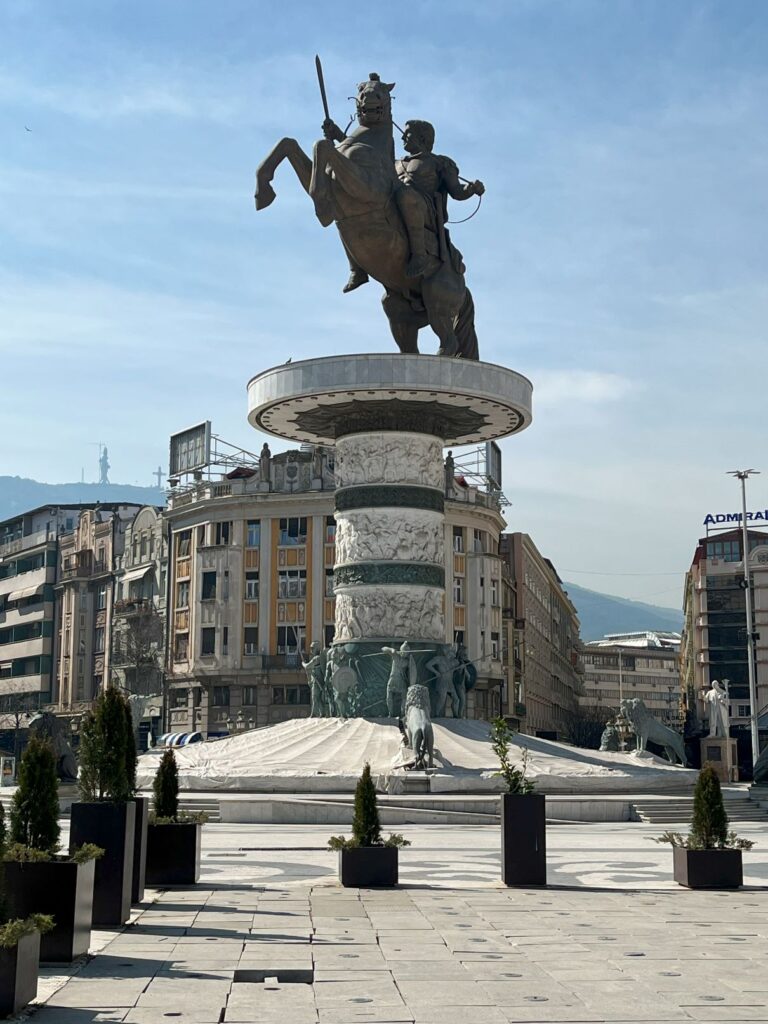
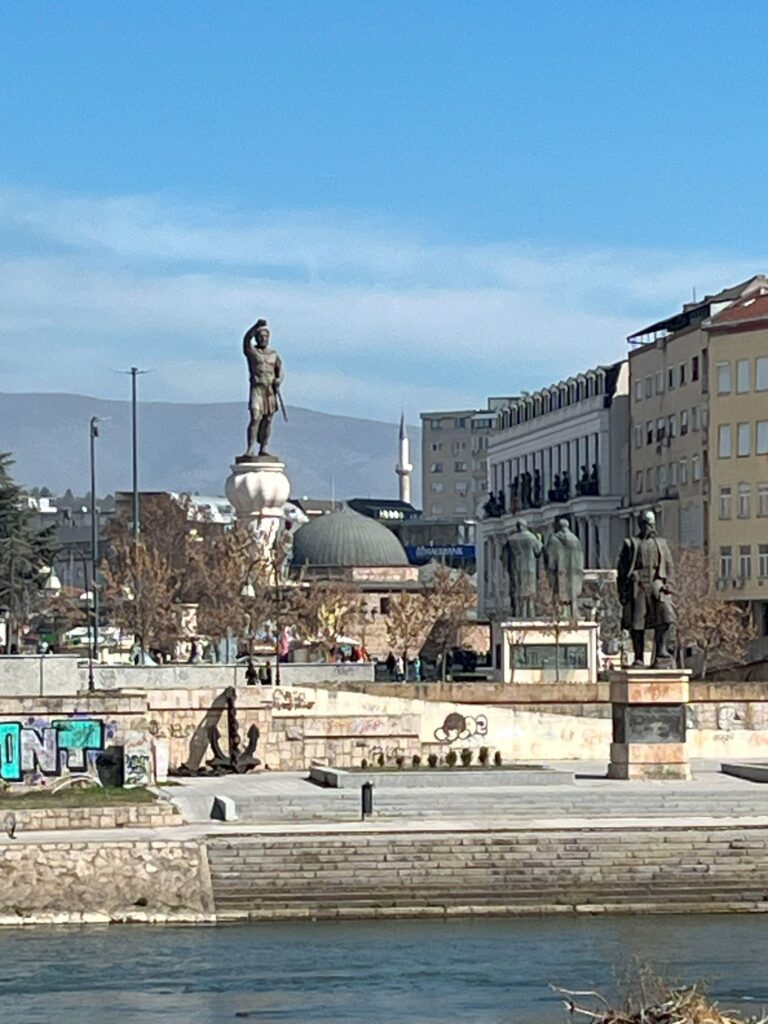
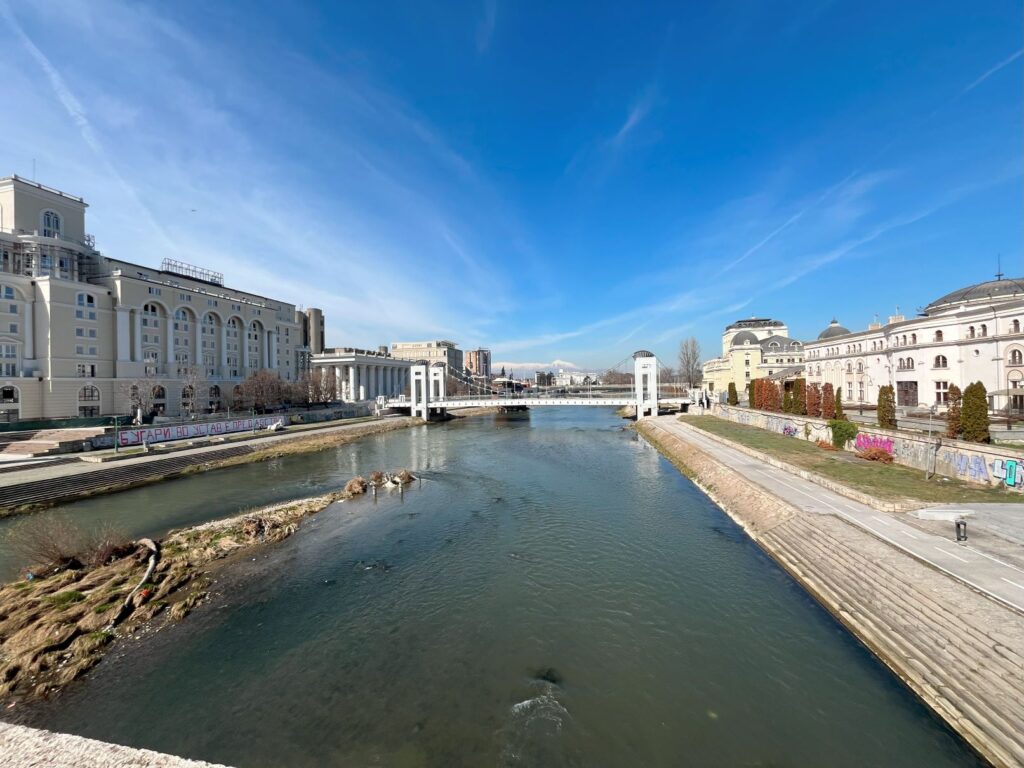

The last day of our tour saw us arriving in another country, our last, Bulgaria where the bus only stopped twice. Once at a mountain cafe for toilets where there was only one cubicle for our 40 people and some refreshments and the second, in the middle of Sofia, the capital, for a walking tour.
This is another city we would have enjoyed more time in, easy on the eye, with European architecture and design and because it was Sunday, pretty quiet. The city is 7000 years old and surrounded by mountains, it is a centre of learning and religion and is now considered one of the startup capitals of the world. Another informative tour guide helped us to understand a bit more of Bulgarian history and its present status as a member of the EU. Evidence of Roman occupation has been carefully excavated and incorporated into the city centre.
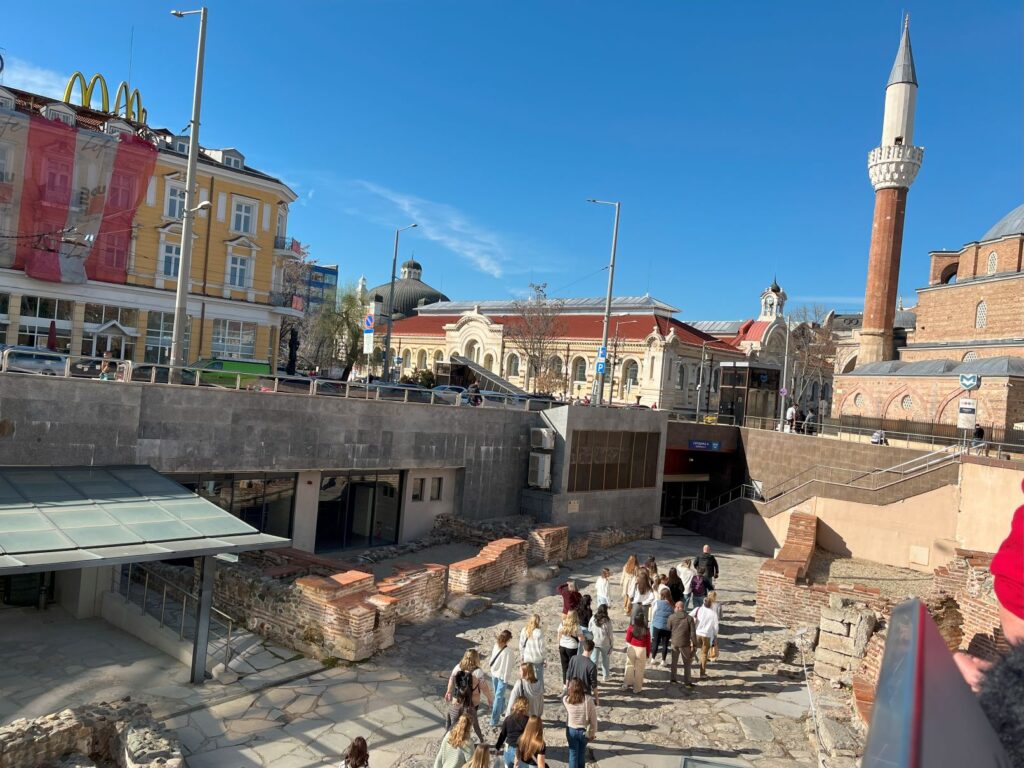
Just to summarise!
The tour was very enjoyable, we saw some wonderful scenic places and were transported very safely all around the Balkans. Our tour guide and bus driver were amazing!
We learned more about the people and the politics and enjoyed good food and new friendships.
Going in the off season meant we saw places with empty streets that are usually clogged with tourists.
There were some deficiencies in the itinerary, there was a lot to fit in!
We would have preferred a smaller group of fellow-travellers (though we all got on very well!), and more time but we did experience a lot of different cultures in a very short time.
We should have added a day or two more in Sofia at the end of the tour!
Would we use Trip-A Deal again? Yes!
